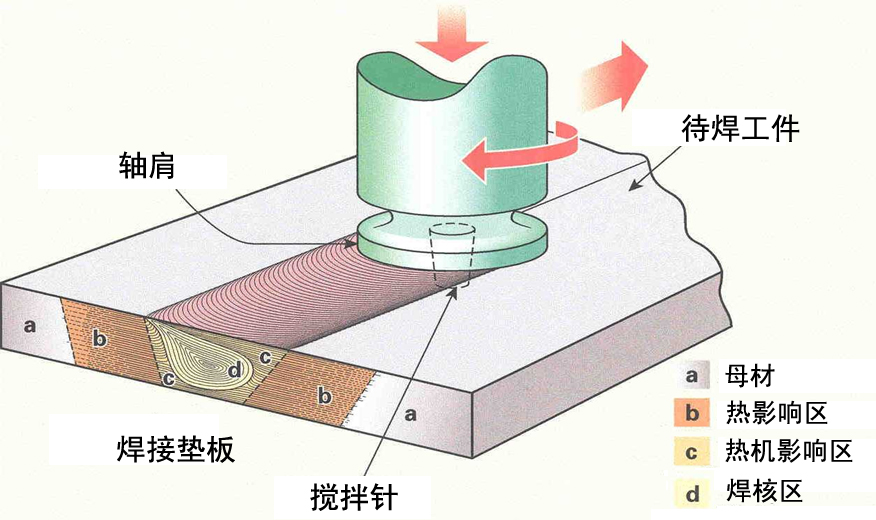Friction stir welding is an advanced mechanical solid phase welding technology. In the friction stir welding process, a welding tool with a special structure (i.e., a mixing head) mainly includes: The shaft shoulder and stirring needle are rotated into the welded parts to be welded, and the plastic deformation heat is released through friction and shear deformation between the stirring head and the material to be welded, so that the material in the welded area reaches a plasticized state. When the stirring head moves forward along the interface to be welded while rotating, the thermoplasticized material will break the welding interface and produce metallurgical fusion driven by the sticking of the stirring head. At the same time, under the forging action of the shaft and shoulder of the mixing head, the welding interface of the workpiece is realized to form a solid phase connection, and the welding principle is shown in Figure 1.

According to the principle of friction stir welding, its technical advantages are as follows:
· Welding of aluminum, magnesium, lead, copper, steel, titanium, metal matrix composite materials, dissimilar metals and other materials;
· Can achieve automation, low energy consumption, high efficiency, low requirements on the working environment;
· No need to add welding wire, no need to protect gas, low cost;
· Safe green;
· Low residual stress of joint, small welding deformation, etc.
Friction stir welding is an advanced mechanical solid phase welding technology. In the friction stir welding process, a welding tool with a special structure (i.e., a mixing head) mainly includes: The shaft shoulder and stirring needle are rotated into the welded parts to be welded, and the plastic deformation heat is released through friction and shear deformation between the stirring head and the material to be welded, so that the material in the welded area reaches a plasticized state. When the stirring head moves forward along the interface to be welded while rotating, the thermoplasticized material will break the welding interface and produce metallurgical fusion driven by the sticking of the stirring head. At the same time, under the forging action of the shaft and shoulder of the mixing head, the welding interface of the workpiece is realized to form a solid phase connection, and the welding principle is shown in Figure 1.

According to the principle of friction stir welding, its technical advantages are as follows:
· Welding of aluminum, magnesium, lead, copper, steel, titanium, metal matrix composite materials, dissimilar metals and other materials;
· Can achieve automation, low energy consumption, high efficiency, low requirements on the working environment;
· No need to add welding wire, no need to protect gas, low cost;
· Safe green;
· Low residual stress of joint, small welding deformation, etc.






